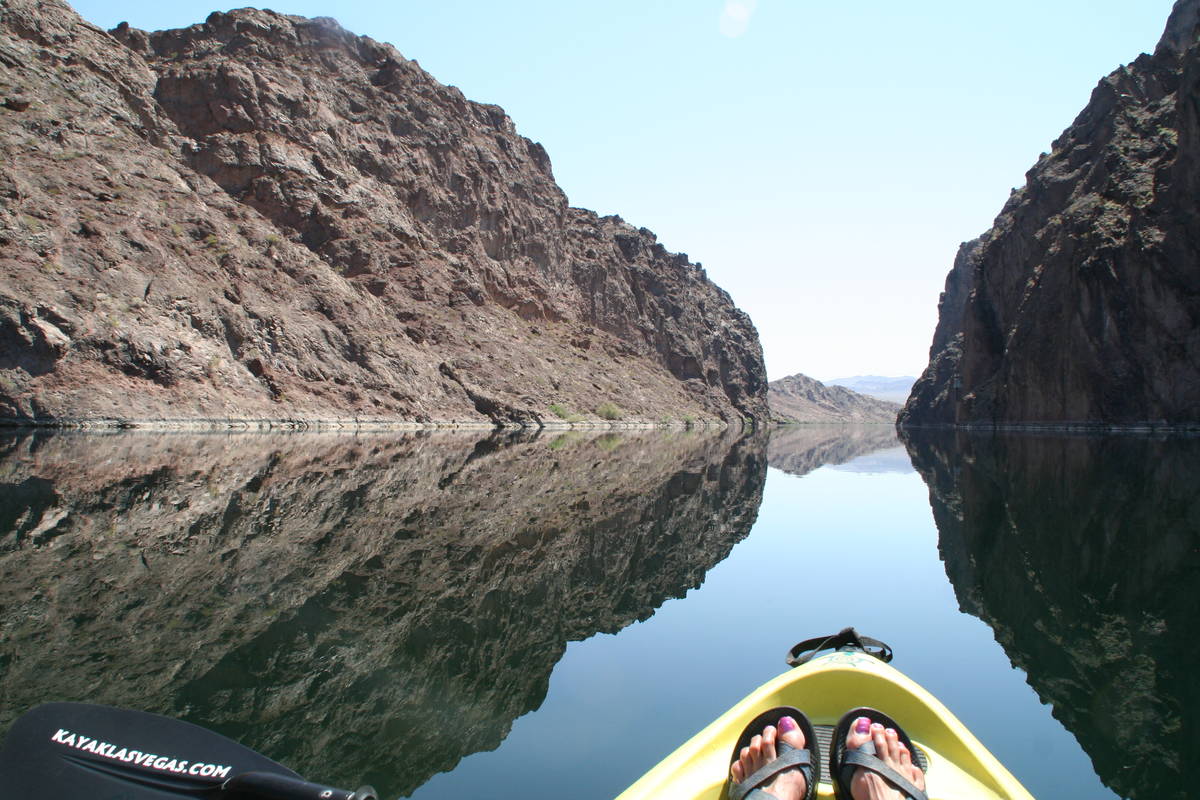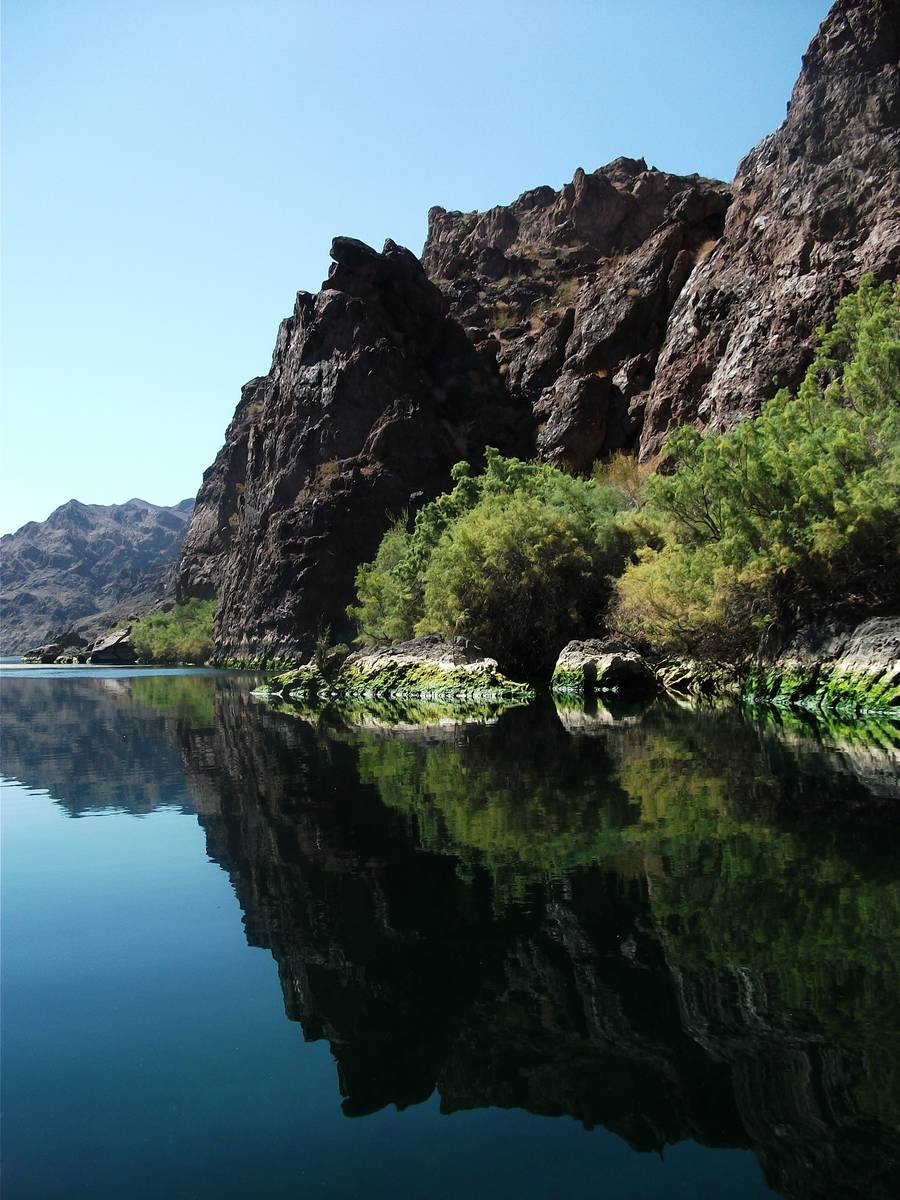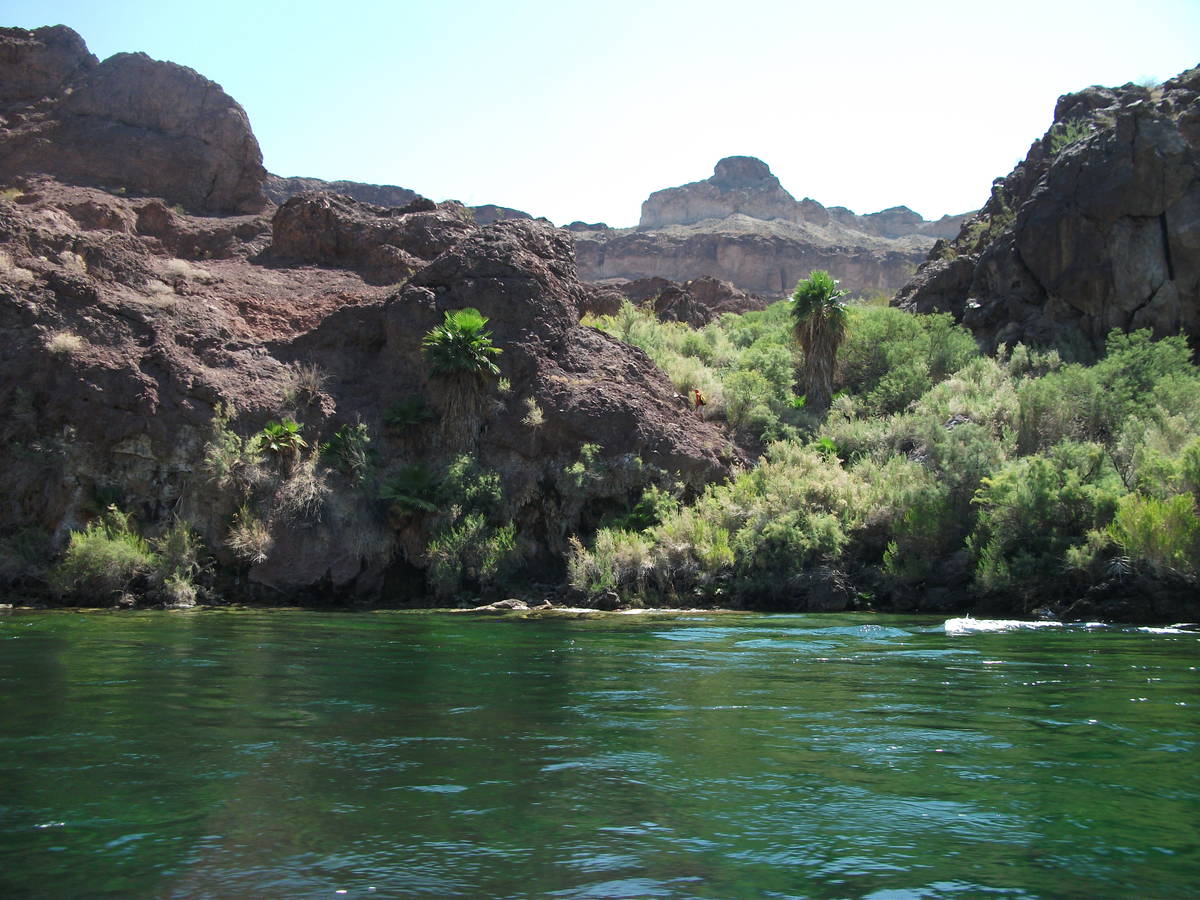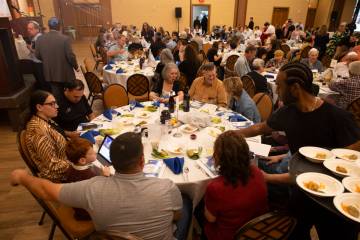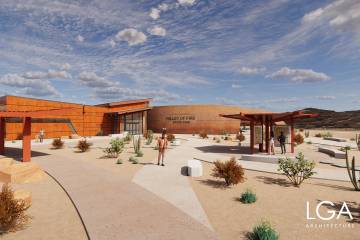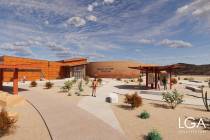A peaceful pass along Black Canyon boasts beauty, wildlife, history
Access to the Lake Mead National Recreation Area requires an annual pass in these days of partial shutdown, but those who hold one can enjoy the Colorado River’s Black Canyon.
Pack up your canoe, kayak or paddleboard and head to Willow Beach, Arizona. You can either paddle upstream or downstream, but upstream is usually preferred for its beauty, wildlife and historic sites. There’s also the advantage of an easier paddle back at the end of your outing, riding the downstream current.
The elevation at Willow Beach is 646 feet, so expect it to be a few degrees warmer than Las Vegas. Once you are on the river you will be officially on the 30-mile long Black Canyon National Water Trail, designated in 2015. The trail runs from Hoover Dam south through the Willow Beach area and then down to Eldorado Canyon in Lake Mohave. Black Canyon is a smooth-water experience with no rapids.
Once you leave the marina area and head upstream, you’ll pass a picnic area, fishing dock and then the Willow Beach National Fish Hatchery. The hatchery specializes in two endangered species, the bonytail chub and the razorback sucker. Soon after the hatchery, the river makes a turn north and away from civilization; the only people you will see upstream will be boaters.
The canyon is a peaceful place and there are plenty of spots to stop and swim or have lunch without company. In the unlikely event you must share a beach or swimming cove, you’re advised to keep at least 10 feet away from others in and out of the water.
There are many destinations all along the way, so you can just paddle as far as you feel comfortable and then return. A good destination for first-timers would be Emerald Cave, about two miles upriver. More advanced paddlers might want to venture to Arizona Hot Springs, upriver about 7 miles, on the right, and marked by a tiny creek flowing into the Colorado.
The first place you might want to stop after you launch is the former gauger’s homesite on your right. Here, in the 1920s, the U.S. Geological Survey built a one-bedroom house complete with garage.
There is just a foundation remaining, but as you paddle upstream from it you will see the path the gauger took each day along a narrow catwalk hanging on the cliff face, finally transporting himself in two cable cars along a wire to cross the canyon to the gauging station. The gauging station was used for monitoring water levels, flows and silt rate.
Just after the gauging station itself on your left, you will come to Emerald Cave on your right. You can paddle into it and it’s a good place to take a photo or two as well as to get out of the sun for a bit.
Wildlife thrives along the river. Look for desert bighorn sheep as well as a variety of birds in the canyon environment. The canyon is frequented by ospreys, bald eagles, golden eagles, great blue herons, egrets, peregrine falcons, red-tailed hawks and a wide variety of waterfowl. When on shore keep rattlesnakes in mind and be sure to look before you put your hands and feet anywhere, especially under the tamarisk near water’s edge.
If you stop along the shore be aware that water levels below Hoover Dam do fluctuate, sometimes as much as 3 to 6 feet in a short time. Pull your craft well out of the water and secure it with a line at least 6 feet long.
On Sundays and Mondays, no motor craft are allowed upstream from Willow Beach to the dam, ensuring more solitude. Also launching early in the morning is best, so you can be off the river by early afternoon, when it’s common for winds to pick up. Even with the current in your favor, it can be a bear to paddle downstream against an upstream wind.
Be self-sufficient and bring everything you’ll need for the day. Besides your boat, paddle gear and personal flotation device, wear a hat and proper clothing — I suggest lightweight long sleeves and trousers, besides wearing sunscreen on all exposed skin, for both water and cliffs reflect and magnify sunlight. Use footwear appropriate for water sports, and in a drybag carry sunblock, towel, food, water and personal items. Be prepared to pack everything out, including all your trash. Don’t count on cellphone service.



